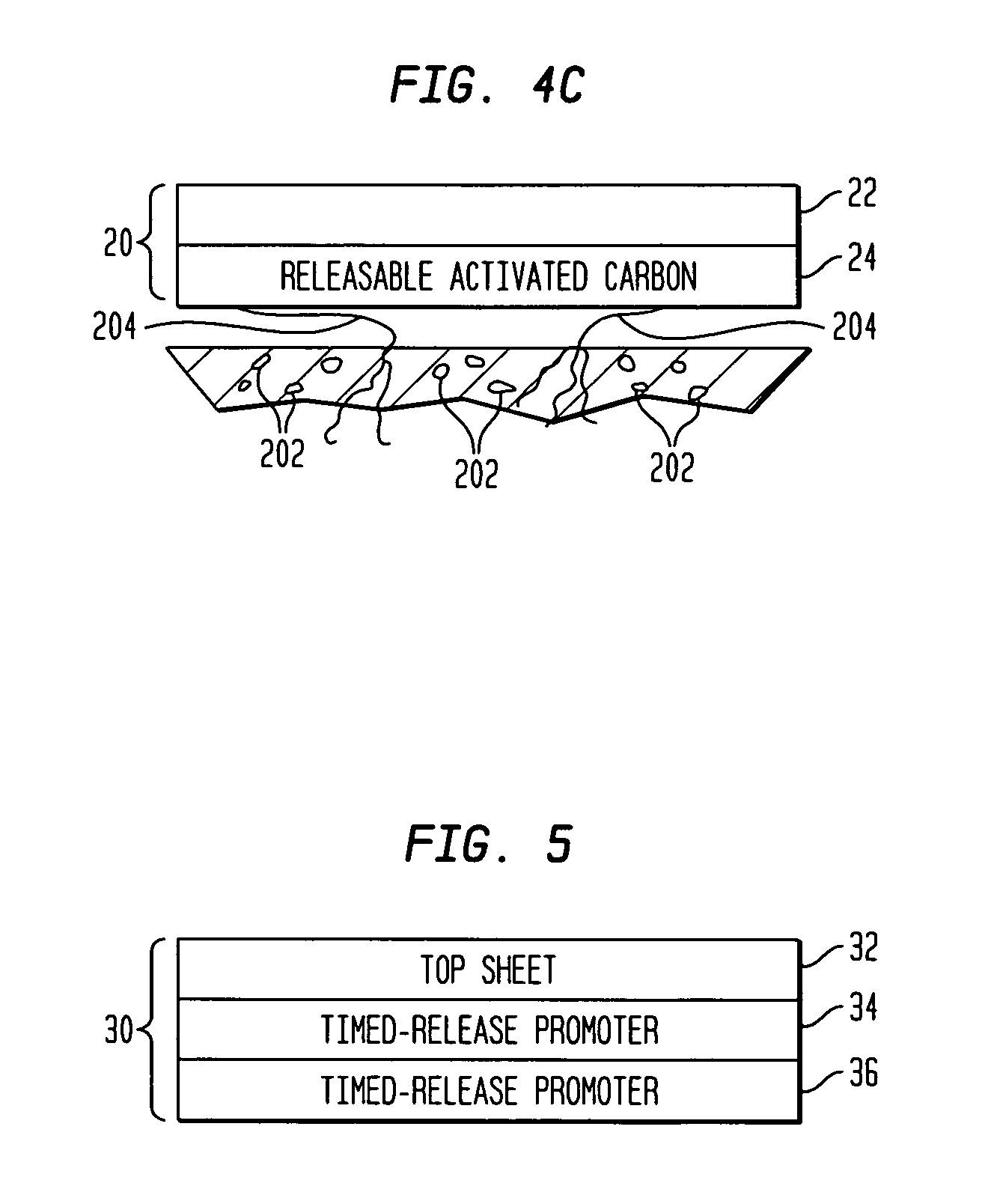Weed control system
a weed control and system technology, applied in the field of weed control, can solve the problems of reducing destroying the diversity of local flora, and destroying and achieve the effect of promoting the germination of weed seeds
- Summary
- Abstract
- Description
- Claims
- Application Information
AI Technical Summary
Benefits of technology
Problems solved by technology
Method used
Image
Examples
Embodiment Construction
[0019]Referring now to the drawings and more particularly to FIG. 1, a weed control system 10 in accordance with the present invention is illustrated as it would be deployed on a ground region 100. For purpose of illustrating the present invention, ground region 100 is infested with the weed seeds 102, some of which may have germinated and sprouted seedlings 104 growing upward from ground region 100. As will be explained further below, weed control system 10 operates to reduce the number of seeds 102 in ground region 100 as a means to greatly reduce or eliminate the growth of an adult population of weeds stemming from weed seeds 102. Weed control system 10 can be implemented by a variety of constructions thereof without departing from the scope of the present invention. However, regardless of the particular construction, the basic principles governing weed control system 10 will be the same for a variety of types of weeds / weed seeds.
[0020]Weed control system 10 is essentially a two-...
PUM
 Login to View More
Login to View More Abstract
Description
Claims
Application Information
 Login to View More
Login to View More - R&D
- Intellectual Property
- Life Sciences
- Materials
- Tech Scout
- Unparalleled Data Quality
- Higher Quality Content
- 60% Fewer Hallucinations
Browse by: Latest US Patents, China's latest patents, Technical Efficacy Thesaurus, Application Domain, Technology Topic, Popular Technical Reports.
© 2025 PatSnap. All rights reserved.Legal|Privacy policy|Modern Slavery Act Transparency Statement|Sitemap|About US| Contact US: help@patsnap.com



